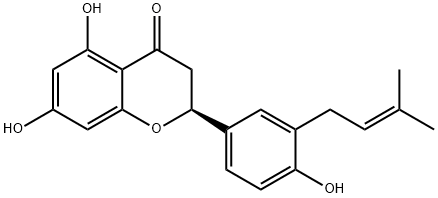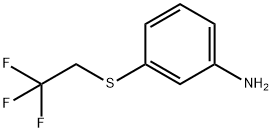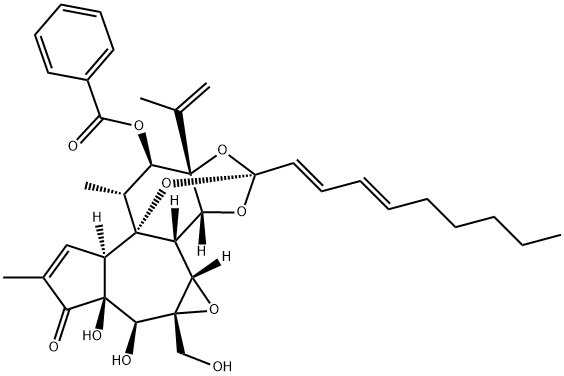Plant extracts
During the process of plant growth, they carry out a number of metabolic and biochemical processes, forming and accumulating various kinds of chemical substances that form the chemical composition of plants. Plant extracts are very complicated and also contain many types of chemical composition with the composition in different parts also being different. Usually plants contain many types of chemical constituents below: alkaloids, glycosides, organic acids, resins (including resin acids, resin alcohols and hydrocarbon resins), volatile oils, sugars (including starches, inulin, gums and phlegmatic, etc.) , amino acids, proteins and enzymes, tannins, plant pigments (including chlorophyll, carotenoids, flavonoids, beet red bases and quinones, etc.), oils and waxes, and inorganic ingredients (trace elements).
There are many kinds of plant extracts with their major functions contained in skin medicines, efficacy cosmetics and cosmetic including: anti-irritant, anti-inflammatory, wound healing, anti-infective, sterilization, wetting, protecting the skin and so on. No matter whether it is a single plant extract or compound extract, it often has multiple effects, especially that the clinical efficacy of the compound extract is reflected in the combined and overall effect of compound compatibility, its efficacy is sometimes more excellent than mixed material of the isolated purified ingredients.
According to the formulations of plant extracts, it can be divided into: water-soluble plant extracts (including water and propylene glycol, propylene glycol, butylene glycol, and glycerol extract), oil-soluble plant extracts (including various vegetable oils, such as the exact of sunflower oil, coconut oil and olive extract oil, sometimes use isopropyl myristate extract), essential oils, spray-dried powder, enzyme-hydrolyzed vegetable protein powder, the pure active ingredients, peeled fruit core powder, liposome encapsulated microcapsules, polysaccharides or other porous polymer-encapsulated microcapsules and microspheres absorbed extract. It has been also used of freshly prepared fruit or vegetable juice in the professional beauty salon or family. If the plant parts used for the plant extract are different, the active ingredients are also different, including: roots, stems, leaves, bark, flowers, garland, fruits, seeds, shoots and the like. This classification method is more meaningful in the preparation, application, storage and transportation, and is used frequently by the manufacturer of some plant extracts.
With the development of various pieces of studies including extraction, isolation, determination techniques of composition and structure and the pharmacological effects, some separated and purified plant extract has begun to be taken seriously. Some companies of plant extracts manufacturing are actively studying and developing these new types of products. Some larger cosmetic companies have done a lot of research work, separating and extracting pure extract and further applying to various products. There are highly effective ingredients contained in such plant extracts, containing no or less other irrelevant substances but containing one or more pure components. These components have accurate contents and structure components, relatively explicit quality standards and inspection methods, and have their product undergone pharmacological testing, clinical trials and activity tests. The application of such plant extracts is more effective and practical, easy for the anti-corrosion and the quality control of the product, but usually having higher cost compared general extract. We will discuss below of some plant extracts which have been applied in cosmetics, having clearly defined composition and structure as well as having undergone separation and purification.
The plant extracts industry in our country, because of the influence of traditional Chinese medicine culture, has unique advantages for development. With rich resources and technological advantages, China has become one of the world's most important suppliers of plant extracts. According to Chinese customs statistics, China's plant extracts of exports had amounted to $815 million in 2010, accounting for 41.9% of China's total export of Chinese medicine, the extract of Chinese products have become the major driving force in the increasing of the China's export growth. At present, there are around 2000 enterprises engaging in plant extracts production and trade business with thousands of products being exported to foreign countries every year.
Data has shown that the inn the first half of 2011, the exports sales of plant extracts in China has reached up to $525 million with an increase of 47.68%. The proportion of plant extract in Chinese exports is gradually increasing. As the product of "natural medicine" and "homeopathy" usage, plant extracts have a very stable market in the international market.
- Structure:

- Chemical Name:3'-prenylnaringenin
- CAS:119240-82-3
- MF:C20H20O5
- Structure:

- Chemical Name:3-((2,2,2- trifluoroethyl)thio)aniline
- CAS:1445684-99-0
- MF:C8H8F3NS
- Chemical Name:Natural willowherb extract
- CAS:
- MF:
- Structure:

- Chemical Name:Yuanhuacine
- CAS:60195-70-2
- MF:C37H44O10
- Chemical Name:GENTIANA SCABRA ROOT EXTRACT
- CAS:
- MF:
- Chemical Name:Perlla Leaf Extract
- CAS:
- MF:
- Chemical Name:Boswellin Extract
- CAS:
- MF:
- Chemical Name:billberry Extract
- CAS:
- MF:
- Chemical Name:Olive Extract
- CAS:
- MF:
- Chemical Name:Pineneedle Extract
- CAS:
- MF:
- Chemical Name:Natural orange extract
- CAS:
- MF:
- Chemical Name:Hovenia dulcis extract
- CAS:
- MF:
- Chemical Name:Persea americana Extract
- CAS:
- MF:
- Chemical Name:Lingonberry extract
- CAS:
- MF:
- Chemical Name:Devil's Claw Extract
- CAS:
- MF:
- Chemical Name:Bilberry Extract/Bilberry.P.E.
- CAS:
- MF:
- Chemical Name:Ghost mortar extract
- CAS:
- MF:
- Chemical Name:Atractyodis Rhizoma P.E.
- CAS:
- MF:
- Chemical Name:Anredera cordifolia extract
- CAS:
- MF:
- Chemical Name:Burnet Extract
- CAS:
- MF:
- Chemical Name:Pueraria flower extract
- CAS:
- MF:
- Chemical Name:Peanut Skin Extract
- CAS:
- MF:
- Chemical Name:Pubescent Holly Root Extract
- CAS:
- MF:
- Chemical Name:Saussurea involucrate extract
- CAS:
- MF:
- Chemical Name:Saw palmetto P.E.
- CAS:
- MF:
- Chemical Name:Indigo fruit extract
- CAS:
- MF:
- Chemical Name:Spirulina extract
- CAS:
- MF:
- Chemical Name:Clover extract
- CAS:
- MF:
- Chemical Name:ECHINACEA PURPUREA
- CAS:
- MF:C22H18O11
- Chemical Name:Ash tree flower extract
- CAS:
- MF:
- Chemical Name:Pine, Pinus strobus, ext.
- CAS:90082-77-2
- MF:
- Chemical Name:Evernia furfuracea, ext.
- CAS:90028-67-4
- MF:
- Chemical Name:walnut extract
- CAS:84012-43-1
- MF:
- Chemical Name:Lotus corniculatus, ext.
- CAS:84696-24-2
- MF:
- Chemical Name:Echinacea pallida, ext.
- CAS:97281-15-7
- MF:
- Chemical Name:Marshmallow (Althaea officinalis), ext.
- CAS:73049-65-7
- MF:
- Chemical Name:Curcuma longa, ext.
- CAS:84775-52-0
- MF:
- Chemical Name:Common Scouring Rush Herb P.E.
- CAS:
- MF:
- Chemical Name:Siberian cocklebur Fruit P.E
- CAS:
- MF:
- Chemical Name:WILD YAM EXT
- CAS:
- MF:
- Chemical Name:Schisandra Berries P.E
- CAS:
- MF:
- Chemical Name:Schisandra Berries P.E.
- CAS:
- MF:
- Chemical Name:Erigeron breviscapus extract
- CAS:
- MF:
- Chemical Name:EUPHRASIAOFFICINALIS
- CAS:
- MF:
- Chemical Name:REDGINSENGEXTRACT
- CAS:
- MF:
- Chemical Name:Coleus Forskohlin extract(20% forskohlin)
- CAS:
- MF:
- Chemical Name:Cyathula root extract
- CAS:
- MF:
- Chemical Name:Chrysanthemum morifolium Ramat extract
- CAS:
- MF:
- Chemical Name:Acanthopanax Root-Bark Extract
- CAS:
- MF:
- Chemical Name:Cranberry (Bilberry) Extract
- CAS:
- MF:
- Chemical Name:Malva Verticillata Extract
- CAS:
- MF:
- Chemical Name:Notoginseng Root Extract
- CAS:
- MF:
- Chemical Name:Semen Coiois Extract
- CAS:
- MF:
- Chemical Name:Carthamus Tinctorius L. P.E.
- CAS:
- MF:
- Chemical Name:Annatto tree, ext.
- CAS:89957-43-7
- MF:
- Chemical Name:Shea tree, ext.
- CAS:91080-23-8
- MF:
- Chemical Name:Angelica archangelica, ext.
- CAS:84775-41-7
- MF:
- Chemical Name:Commiphora erythraea, ext.
- CAS:100084-96-6
- MF:
- Chemical Name:Eleutherococcus senticosus, ext.
- CAS:84696-12-8
- MF:
- Chemical Name:Fennel Seed Ext
- CAS:
- MF:
- Chemical Name:PRUNELLA VULGARIS LEAF EXTRACT
- CAS:
- MF:
- Chemical Name:GoldenRodExtract
- CAS:
- MF:
- Chemical Name:VASICINONE(P)
- CAS:
- MF:
- Chemical Name:Anemarrhena Rhizome Extract
- CAS:
- MF:
- Chemical Name:Banaba Leaf P.E.
- CAS:
- MF:
- Chemical Name:Chaga extract
- CAS:
- MF:
- Chemical Name:Lily Bulb Extract
- CAS:
- MF:
- Chemical Name:Plantago Seed Extract
- CAS:
- MF:
- Chemical Name:Red Peony Extract
- CAS:
- MF:
- Chemical Name:Purple Rice P.E
- CAS:
- MF:
- Chemical Name:Tatarinow Sweetflag Extract
- CAS:
- MF:
- Chemical Name:Acai Berry Extract
- CAS:
- MF:
- Chemical Name:Snail Extract
- CAS:
- MF:
- Chemical Name:Reed Rhizome
- CAS:
- MF:
- Chemical Name:Dong ling herb extracts
- CAS:
- MF:
- Chemical Name:Tinospora extract
- CAS:
- MF:
- Chemical Name:Epimedium Extract
- CAS:
- MF:
- Chemical Name:American ginseng P.E.
- CAS:
- MF:
- Chemical Name:Dried Ginger Extract
- CAS:
- MF:
- Chemical Name:Radix zanthoxyli Extract
- CAS:
- MF:
- Chemical Name:Fructus aurantii extract
- CAS:
- MF:
- Chemical Name:Ginseng stem leaf extract
- CAS:
- MF:
- Chemical Name:Astragalus membranaceus, ext.
- CAS:94166-93-5
- MF:
- Chemical Name:Cinnamon Bark P.E.
- CAS:
- MF:
- Chemical Name:EMBRYO EXTRACT
- CAS:
- MF:
- Chemical Name:SesameExtract
- CAS:
- MF:
- Chemical Name:Horse Chestnut Extract
- CAS:
- MF:
- Chemical Name:Guava Leaf extract/Guava Leaf P.E.
- CAS:
- MF:
- Chemical Name:Rhodiola Rosea Extract/Rhodiola Rosea P.E.
- CAS:
- MF:
- Chemical Name:Gentiopicrin(Gentiana manshurica Kitag)
- CAS:
- MF:
- Chemical Name:Epimdium biolba
- CAS:
- MF:
- Chemical Name:Cabbage Extract/Cabbage PE.
- CAS:
- MF:
- Chemical Name:Silktree Albizia Bark Extract
- CAS:
- MF:
- Chemical Name:Walnut extract
- CAS:
- MF:
- Chemical Name:Bayberry Extract
- CAS:
- MF:
- Chemical Name:Adenophora Extract
- CAS:
- MF:
- Chemical Name:Hydrangea Root Extract
- CAS:
- MF:
- Chemical Name:Nutgrass Extract
- CAS:
- MF:
- Chemical Name:Arctium Extract
- CAS:
- MF:
- Chemical Name:Fructus Cannabis
- CAS:
- MF: